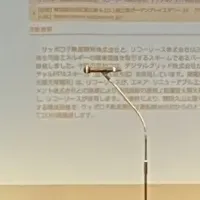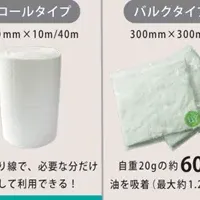
CATL and Ellen MacArthur Foundation Unite for Circular Battery Future
Accelerating Towards a Circular Future for Batteries: A Partnership with CATL and Ellen MacArthur Foundation
In an ambitious move announced during the London Climate Action Week, CATL (Contemporary Amperex Technology Co., Limited) and the Ellen MacArthur Foundation have reaffirmed their commitment to advancing a circular economy for batteries. This collaboration seeks to decouple the production of new batteries from the extraction of raw materials, promoting a sustainable future where access to battery technology aligns with environmental goals.
A Clear Vision for Transformation
The partnership's goal aims for a transformative shift in the battery industry, focusing on scalability, resource resilience, and sustainability. Since initiating their strategic alliance earlier this year, CATL and the Ellen MacArthur Foundation have been working to develop a comprehensive framework for integrating circular economy principles throughout the battery value chain. This framework acts as a guiding star for innovation and collaboration among various stakeholders, setting the groundwork for long-term industry success.
Jiang Li, Vice President and Board Secretary of CATL, discussed these ambitions during a high-profile panel hosted by the Ellen MacArthur Foundation. The panel emphasized the importance of collaboration among researchers, industries, and governments to realize these goals on a large scale.
To emphasize this commitment, CATL has set a directional target: within the next 20 years, 50% of new battery production should rely on recycled materials rather than new raw resources. This goal serves as a beacon to guide efforts in exploring circular models and fostering partnerships across the battery ecosystem.
Four Principles for Industry Transformation
The partnership centers on four practical principles aligned with the Ellen MacArthur Foundation's circular economy framework. These principles seek to revolutionize the entire battery value chain, from resource extraction through manufacturing to mobility and energy systems. They provide a starting point for alignment with key stakeholders and collaborative measures necessary to accelerate the shift towards a more circular battery economy.
Rethinking Systems
A circular approach requires systemic shifts across the entire battery ecosystem. By embedding circular economy principles in every phase of the value chain, it is possible to encourage low-carbon development, reduce waste, and facilitate a continuous flow of materials. This principle underscores the need to optimize the structure and interactions within the value chain for more resilient and efficient resource utilization.
Redesigning Products
The journey toward a circular economy begins in the design phase itself. Batteries need to be tailored for longevity, disassembly, and second-life applications using a modular architecture and durable components. This focus on reuse and recyclability ensures products retain their value for longer and can be efficiently repurposed at the end of their life cycle.
Rethinking Business Models
Innovative business models play a crucial role in decoupling resource consumption from economic growth. Transitioning from traditional ownership to shared, service-based, or second-life models can enhance battery accessibility and provide greater value to users. This principle supports the creation of economically viable pathways for large-scale circular economies.
Recycling Materials
An effective recycling system is essential for a functioning circular economy. Materials must be efficiently recovered and repurposed for high-quality uses to increase the share of recycled materials in the economy. This reduces dependency on new resources, contributing to a safer and more sustainable supply chain for critical materials.
CATL has already started implementing these principles effectively. At the systems level, they've introduced a Carbon Chain Management System aimed at decarbonizing the battery value chain. In product design, CATL has significantly extended battery lifespans; their energy storage batteries now reach up to 18,000 cycles, thus reducing material needs and emissions.
Additionally, CATL has plans to establish over 10,000 battery swap stations to enhance battery efficiency and facilitate the retrieval of end-of-life batteries. The company also operates the world’s largest battery recovery network, recycling approximately 130,000 tons of old batteries and recovering 17,000 tons of lithium salts in 2024 alone.
Global Energy Circularity Commitment (GECC)
To test and expand their shared goals in real-world conditions, CATL has launched the Global Energy Circularity Commitment (GECC). Announced in March, GECC serves as an open global platform where industry players, cities, and academia can come together to pilot circular economy solutions practically. CATL aims to collaborate with stakeholders across the whole value chain to explore insights and share knowledge, amplifying their impact. This collective effort is vital for creating a resilient and sustainable battery ecosystem.
Looking Forward
This shared vision marks an important starting point for fostering new forms of collaboration, transparency, and systemic innovation in the global battery landscape. CATL and the Ellen MacArthur Foundation will continue to engage with public and private sector partners to refine and expand upon these ideas, facilitating their practical implementation.
Jiang Li commented, "The circular economy for batteries will not be developed in a lab or boardroom; it will take shape through collaboration, experimentation, and concerted efforts. The goal we have set serves as a signal to propel this work forward. To achieve this, global cooperation, cross-sector learning, and open engagement across the entire value chain are essential—values the Ellen MacArthur Foundation has long championed."
Topics Environment)










【About Using Articles】
You can freely use the title and article content by linking to the page where the article is posted.
※ Images cannot be used.
【About Links】
Links are free to use.